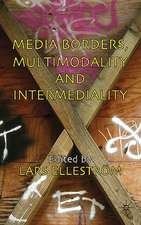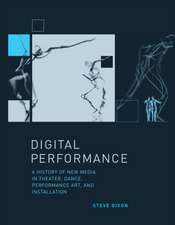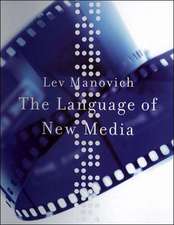The Mobile Story: Narrative Practices with Locative Technologies
Autor Jason Farmanen Limba Engleză Paperback – 23 mai 2014
| Toate formatele și edițiile | Preț | Express |
|---|---|---|
| Paperback (1) | 357.17 lei 6-8 săpt. | |
| Taylor & Francis – 23 mai 2014 | 357.17 lei 6-8 săpt. | |
| Hardback (1) | 1113.45 lei 6-8 săpt. | |
| Routledge – 6 oct 2013 | 1113.45 lei 6-8 săpt. |
Preț: 357.17 lei
Nou
68.34€ • 71.36$ • 56.44£
Carte tipărită la comandă
Livrare economică 15-29 aprilie
Specificații
ISBN-10: 0415707285
Pagini: 338
Ilustrații: 35 Halftones, black and white
Dimensiuni: 152 x 229 x 18 mm
Greutate: 0.48 kg
Ediția:1
Editura: Taylor & Francis
Colecția Routledge
Locul publicării:Oxford, United Kingdom
Public țintă
Postgraduate and UndergraduateCuprins
Notă biografică
Recenzii
"The Mobile Story: Narrative Practices with Locative Technologies, could be viewed primarily as a
study of current web-based technology. However, within each of the chapters, those interested in
enhancing the study of narrative production can greatly benefit from reading how they are being
used and evaluated. This book addresses the increased use and need for the critical study of mobile
technologies in the classroom, particularly as it is producing new and innovative storytelling projects
that question our traditional ways of studying, understanding and experiencing notions of space,
time, narrative and history." - Elena Foulis, Ohio State University
"The Mobile Story is a cutting-edge collection of essays for the designer or scholar of locative media in the present moment. It moves the field forward from what has felt, for several years, like a period of stagnation. But it also broadens the horizons of what mobile games can be." —Lauren Burr, First Person Scholar
Descriere
What happens when stories meet mobile media? In this cutting-edge collection, contributors explore digital storytelling in ways that look beyond the desktop to consider how stories can be told through mobile, locative, and pervasive technologies. This book offers dynamic insights about the new nature of narrative in the age of mobile media, studying digital stories that are site-specific, context-aware, and involve the reader in fascinating ways. Addressing important topics for scholars, students, and designers alike, this collection investigates the crucial questions for this emerging area of storytelling and electronic literature.
Topics covered include the histories of site-specific narratives, issues in design and practice, space and mapping, mobile games, narrative interfaces, and the interplay between memory, history, and community.












